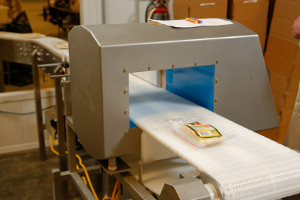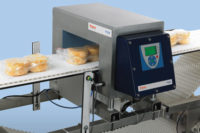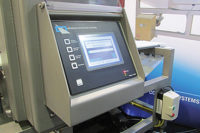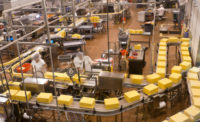In January's article "Inspection gadgets," leading suppliers shared their expertise and talked about what’s new in detection systems. In this dairyfoods.com exclusive, we include responses from some of these experts not included in the magazine article.
Meet the Panel of detection system experts:
Rick Cash, Thermo Fisher Scientific
Steve Gidman, Fortress Technology Young
Todd Grube, Heat and Control
Ray Kondracki, Yamato Corp., Mequon, Wis.
Bob Ries, Thermo Fisher Scientific
Ray Spurgeon Jr., Eriez
Laura Studwell, Loma Systems
Christopher Young, Anritsu Industrial Solutions USA
We asked: What equipment works best for inspection of: Fluid milk, ice cream, cheese and yogurt?
Gidman: A metal detector can be used in any conceivable configuration (providing packaging does not contain metal) X-ray technology is limited to either conveyor or pipe‐line applications. Metal detectors are by far the industry standard for contaminant detection equipment in the dairy industry. Understanding the advantages and limitations of each technology is essential.
Young: Pipeline X-ray can be a good solution to detect extremely small contaminants however it may be more cost effective to look at the final package or case since the detection levels are still very good compared to conventional metal detectors. Also, closed packed inspection ensures that no additional contamination can enter the product.

|
| Loma Conveyor system |
Studwell: The systems that are best suited for the inspection of fluid milk, depending on what you are trying to detect, are either the metal detector pipeline or the X-ray pipeline. The systems that are best suited for the inspection of ice cream and yogurt, depending on the product state, are the metal detector pipeline, the X-ray pipeline or the metal detector conveyor system if packaged. The system that is best for cheese is the X-ray inspection system with the optional X-weigh feature.
Spurgeon: It is best to first scan these using a metal detector in the pipeline followed by a metal detector or X-ray system after the product is packaged and sealed. As discussed, any foil seal will require the use of an X-ray system.
Grube: Many factors are involved in determining the best equipment for inspecting a given product. For example, where in the process will the inspection take place? To inspect milk, ice cream, and yogurt prior to packaging would require a pipeline metal detector. After packaging, depending on the type of packaging material used, either a metal detector or X-ray could be used. Any metal films, like those used on many yogurt containers, will dictate the need to use an X-ray system rather than metal detectors. Another important factor is what sensitivities are required, as well as whether or not contaminants other than metals need to be detected. There are lots of variables, and that’s one reason we maintain demonstration centers so the best individual or combination inspection system can be evaluated for each product and application.
Cash: Fluid milk, ice cream, cheese and yogurt share something in common — the presence of fat and protein. Each can precipitate or coat the inside of piping with a thin layer that can blind measurement systems like NIR due to its limited penetration into the product stream. The Thermo Scientific E scan system measures through the entire product stream. This brings a more reliable measurement to any dairy pumped product.
Ries: Packaged ice cream, cheese and yogurt are best suited to X-ray inspection due to their high and changeable product effect in a metal detector and the increased use of metalized film or foil in packaging materials. Unpackaged product flows also typically pass through a pipeline metal detector early in the process assuring a batch or lot is safe prior to further processing.
Kondracki: The I-Series definitely falls into this category. It offers the ability to handle a broad range of packaging formats (bags, tubs, cartons, trays, etc.) as well as a feedback control function for higher accuracy. Ultimately, the I-Series can help to achieve a better yield rate as well as labor savings.




